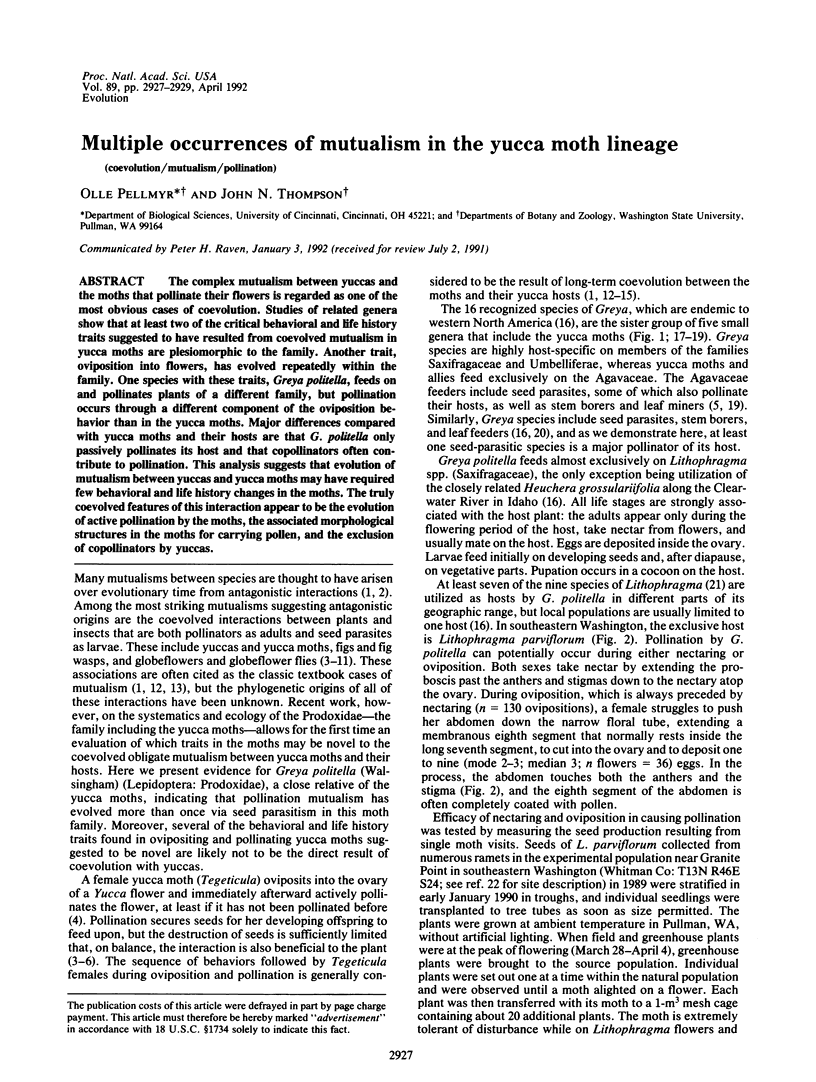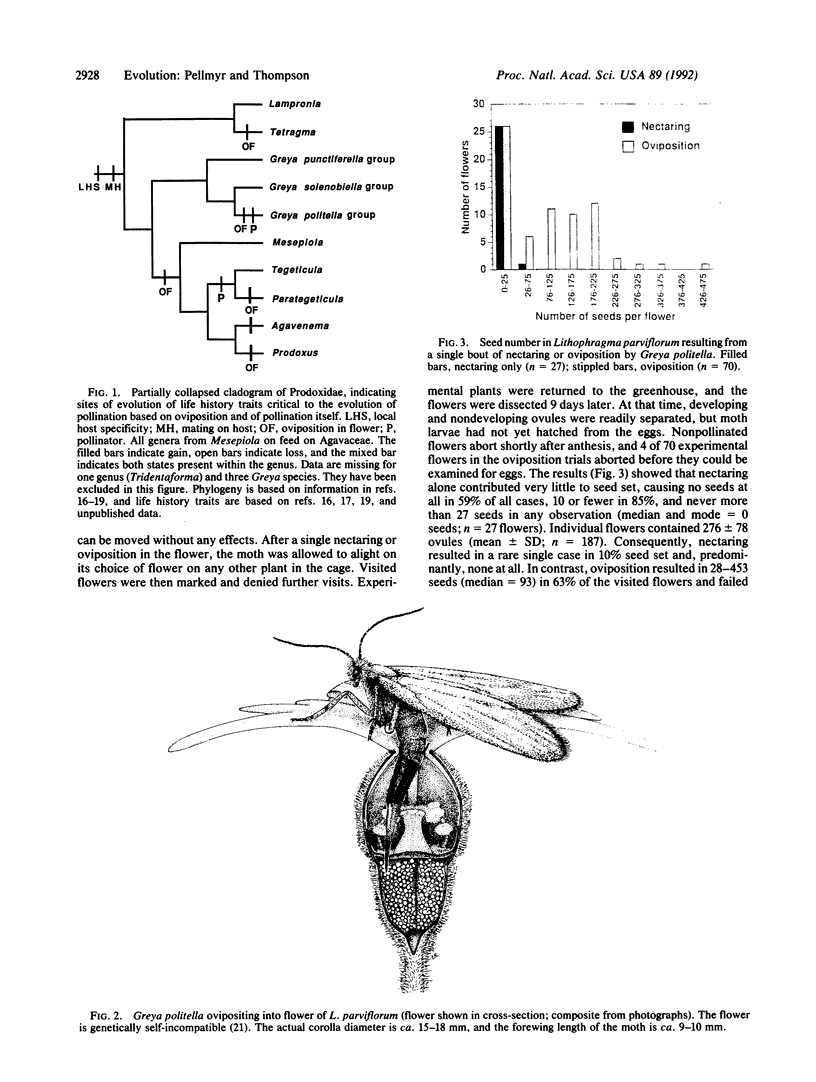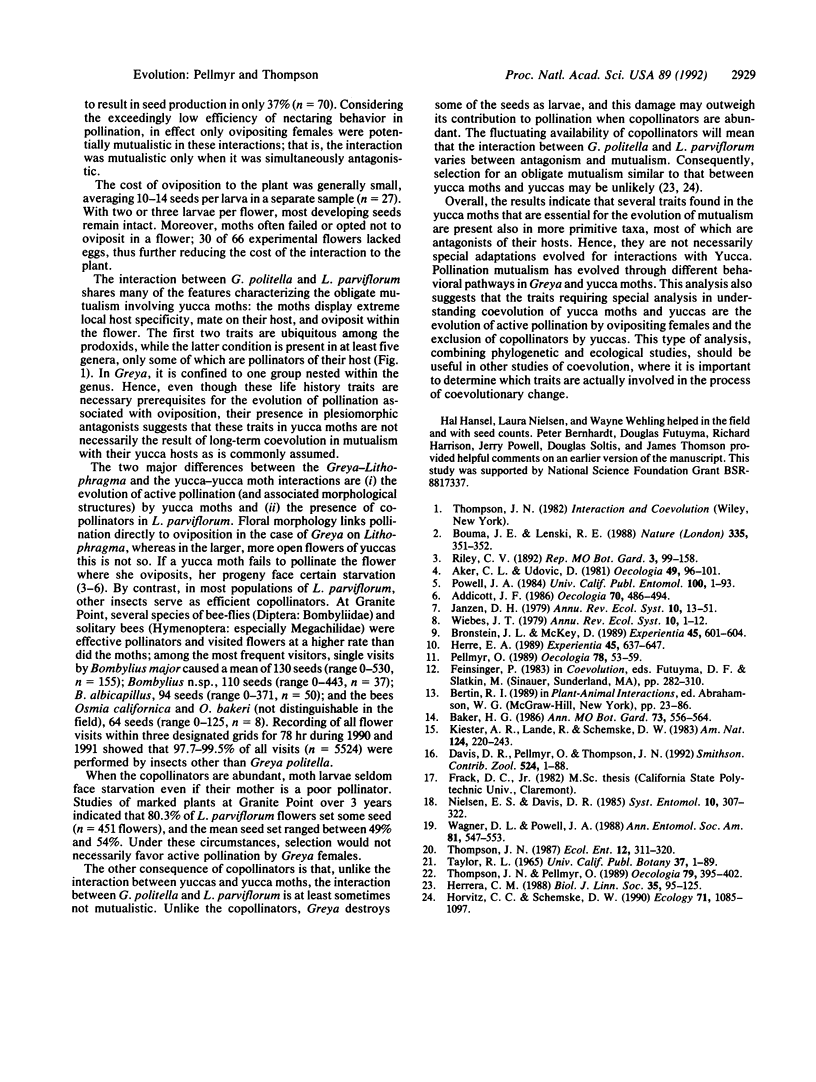Abstract
The complex mutualism between yuccas and the moths that pollinate their flowers is regarded as one of the most obvious cases of coevolution. Studies of related genera show that at least two of the critical behavioral and life history traits suggested to have resulted from coevolved mutualism in yucca moths are plesiomorphic to the family. Another trait, oviposition into flowers, has evolved repeatedly within the family. One species with these traits, Greya politella, feeds on and pollinates plants of a different family, but pollination occurs through a different component of the oviposition behavior than in the yucca moths. Major differences compared with yucca moths and their hosts are that G. politella only passively pollinates its host and that copollinators often contribute to pollination. This analysis suggests that evolution of mutualism between yuccas and yucca moths may have required few behavioral and life history changes in the moths. The truly coevolved features of this interaction appear to be the evolution of active pollination by the moths, the associated morphological structures in the moths for carrying pollen, and the exclusion of copollinators by yuccas.
Full text
PDF


Images in this article
Selected References
These references are in PubMed. This may not be the complete list of references from this article.
- Bouma J. E., Lenski R. E. Evolution of a bacteria/plasmid association. Nature. 1988 Sep 22;335(6188):351–352. doi: 10.1038/335351a0. [DOI] [PubMed] [Google Scholar]




